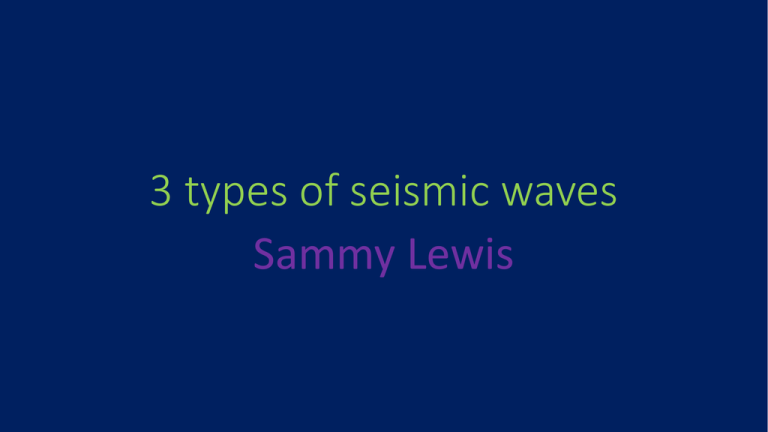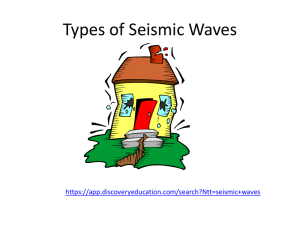3 types of seismic waves
advertisement

3 types of seismic waves Sammy Lewis 3 Types of seismic waves Primary waves • Primary waves are waves that tear the top of the earth’s crust or surface • This is the fastest kind of seismic wave, and, consequently, the first to 'arrive' at a seismic station. • The P (primary) wave can move through solid rock and fluids, like water or the liquid layers of the earth. Secondary waves • Secondary waves cause the rocks they pass through to change in shape. • These waves are the second fastest traveling seismic waves (after primary waves) and can travel through solids but not through liquids or gases. • Also called shear wave, S wave. Surface waves • In physics, a surface wave is a mechanical wave that propagates along the interface between differing media. • usually as a gravity wave between two fluids with different densities. • A surface wave can also be an elastic (or a seismic) wave, such as with a Rayleigh or Love wave. Links to go to for more information • http://www.geo.mtu.edu/UPSeis/waves.html • http://allshookup.org/quakes/wavetype.htm





